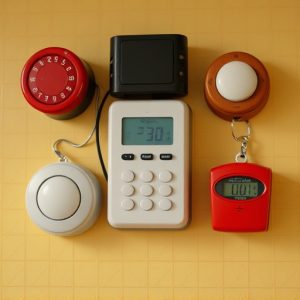Most Effective Self Defense Alarms for Lone Workers’ Safety
Lone workers face unique safety risks, necessitating robust Most Effective Self Defense Alarms as a…….
Lone workers face unique safety risks, necessitating robust Most Effective Self Defense Alarms as a crucial line of defense against accidents, injuries, and emergencies. These alarms should offer loud sounds, GPS tracking, automatic alerts, water resistance, and long battery life for optimal security in remote settings. Implementing these systems through training, testing, and clear communication protocols ensures the well-being of isolated workers and facilitates swift help arrival during crises.
In today’s diverse workplace, lone workers face unique challenges. The absence of immediate assistance amplifies risks, underscoring the need for robust safety alert systems. This article explores the critical role these systems play in safeguarding solitary workers, focusing on understanding specific dangers and implementing effective solutions. We delve into the key features of the most effective self-defense alarms, providing best practices to ensure their optimal utilization. By harnessing these tools, organizations can foster a safer environment for solo professionals.
- Understanding the Risks of Lone Work
- Key Features of Effective Self-Defense Alarms for Lone Workers
- Implementation and Best Practices for Safety Alert Systems
Understanding the Risks of Lone Work
Lone workers, by definition, operate independently without immediate supervision or backup. While this autonomy offers numerous advantages, it also exposes them to unique risks that require proactive safety measures. These risks range from unexpected accidents and injuries to more severe threats like violence or natural disasters. Understanding these potential hazards is the first step towards implementing effective solutions.
One of the most crucial elements in mitigating these risks is the adoption of robust safety alert systems, specifically designed self-defense alarms. These devices empower lone workers with a powerful tool to protect themselves and seek assistance promptly. The most effective self-defense alarms combine features like loud auditory signals, GPS tracking, and automatic alert notifications to ensure swift response in case of emergencies, making them indispensable for anyone working in isolation.
Key Features of Effective Self-Defense Alarms for Lone Workers
Lone workers, by definition, are often isolated during their shifts, making self-defense alarms a critical component of their safety kit. When it comes to choosing the most effective self-defense alarm, several key features stand out as essential. First and foremost, reliability is paramount. The alarm should have a long battery life, robust construction to withstand harsh conditions, and a loud, piercing sound that can alert others to an emergency even in the most remote locations.
Additionally, features like automatic fall detection and built-in GPS tracking significantly enhance its effectiveness. Automatic fall detection can prompt an alarm even if the worker is unable to manually activate it, while GPS tracking enables emergency services to quickly pinpoint the worker’s location. Other valuable aspects include water resistance, a compact design for easy portability, and compatibility with existing communication devices or apps for seamless integration into their workflow.
Implementation and Best Practices for Safety Alert Systems
The implementation of safety alert systems for lone workers is a proactive step towards ensuring their well-being and rapid response in case of emergencies. These systems, often employing the most effective self-defense alarms, are designed to provide peace of mind and enhance personal security. Best practices suggest integrating these devices seamlessly into an individual’s routine and work environment. For instance, training users on how and when to activate alerts can significantly improve their effectiveness. Regular testing and maintenance are equally crucial to ensure the system remains reliable and functional at all times.
Placement is key; alerts should be strategically positioned for maximum coverage and visibility. This might involve attaching them to essential tools or clothing and ensuring they’re easily accessible. Additionally, clear communication protocols must be established, allowing workers to quickly notify relevant authorities or colleagues during an emergency. By combining advanced technology with user-centric design and comprehensive training, organizations can harness the full potential of safety alert systems to protect their lone workers.
Lone workers face unique challenges, but by implementing effective safety alert systems, such as the most efficient self-defense alarms available, they can significantly enhance their personal security. Understanding the risks associated with lone work and following best practices for deployment ensures these tools serve their purpose when it matters most. By equipping ourselves with the right knowledge and technology, we can navigate our work environments with greater peace of mind.


